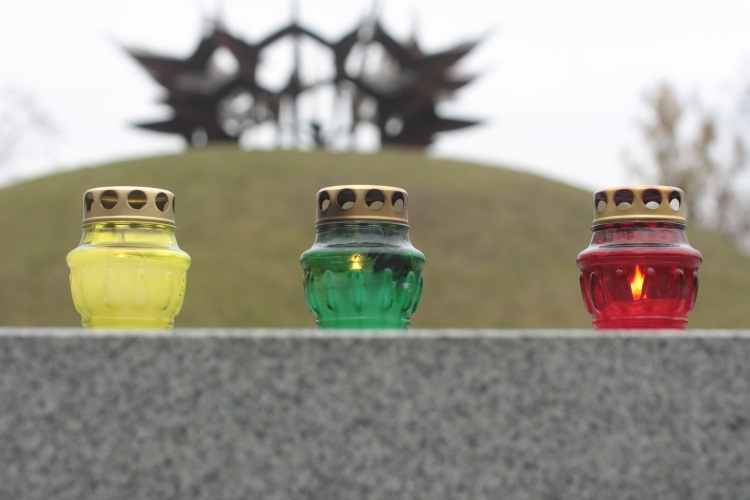 Today is Black Ribbon day, in which Europeans remember the victims of Nazism and Stalinism, so it is only natural that today’s entry in the list* of dozen Lithuanian takeaways is dedicated to the deep scars that the waves of genocide left on the country. The day, 23 August, was chosen to coincide with the Molotov-Ribbentrop Pact, in which Soviet Russia and Hitler’s Nazi Germany divided what is now commonly dubbed Eastern Europe – states running in a line from Romania to Finland into respective spheres of influence. The pact was of course later scrapped, but it brings together the two worst aggressors of the Lithuanian people in history. Russia carted off an estimated 300,000 Lithuanians to Siberia in two waves before and after the Nazi invasion in 1941-1944. The Nazis, on their end, carried out one of the most complete genocides during their brutal rule in Lithuania, murdering nearly all Jews in Lithuania, including more or less half of the population of Vilnius – a city once dubbed the Jerusalem of the North. Hundreds more Lithuanians rebels were killed by the Soviet KGB in later years. All this brutality has, of course, left deep scars in the tissue of Lithuanian society, and although for the most part the country keeps a lid on the past, these events have a way of bubbling up to the surface with a daunting frequency. If Lithuania is still reeling from the shock, it is also a country that demonstrates just how resilient a country can be in the face of such evil, and bounce back from the brink of catastrophe to be the cauldron of optimism that it is today. This resilience was symbolised by the “Baltic Way” – a human chain of Estonians, Latvians and Lithuanians formed this day in 1989, stretching from Vilnius to Tallinn, via Riga, that marked the beginning of the end of Soviet grip on the region.
Today is Black Ribbon day, in which Europeans remember the victims of Nazism and Stalinism, so it is only natural that today’s entry in the list* of dozen Lithuanian takeaways is dedicated to the deep scars that the waves of genocide left on the country. The day, 23 August, was chosen to coincide with the Molotov-Ribbentrop Pact, in which Soviet Russia and Hitler’s Nazi Germany divided what is now commonly dubbed Eastern Europe – states running in a line from Romania to Finland into respective spheres of influence. The pact was of course later scrapped, but it brings together the two worst aggressors of the Lithuanian people in history. Russia carted off an estimated 300,000 Lithuanians to Siberia in two waves before and after the Nazi invasion in 1941-1944. The Nazis, on their end, carried out one of the most complete genocides during their brutal rule in Lithuania, murdering nearly all Jews in Lithuania, including more or less half of the population of Vilnius – a city once dubbed the Jerusalem of the North. Hundreds more Lithuanians rebels were killed by the Soviet KGB in later years. All this brutality has, of course, left deep scars in the tissue of Lithuanian society, and although for the most part the country keeps a lid on the past, these events have a way of bubbling up to the surface with a daunting frequency. If Lithuania is still reeling from the shock, it is also a country that demonstrates just how resilient a country can be in the face of such evil, and bounce back from the brink of catastrophe to be the cauldron of optimism that it is today. This resilience was symbolised by the “Baltic Way” – a human chain of Estonians, Latvians and Lithuanians formed this day in 1989, stretching from Vilnius to Tallinn, via Riga, that marked the beginning of the end of Soviet grip on the region.
* What is “Dozen to go? To wrap up the blog, I have picked out a dozen of the things during my year in Vilnius that I am most likely to carry with me in my memories of the place. They are in no particular order, and in any event any effort to rank them would amount to comparing apples with oranges.
 Lithuanian designers really have something going for them, so I’m going to stick it in the list* of takeaways from a year in the countruy. At its base lies a repertoire of simple but effective geometric patterns inherited from an age before Christianity took root, which weaves in and out of creative works in the country like a golden thread. Add to this a knack with woodwork, iron, linen glass and
Lithuanian designers really have something going for them, so I’m going to stick it in the list* of takeaways from a year in the countruy. At its base lies a repertoire of simple but effective geometric patterns inherited from an age before Christianity took root, which weaves in and out of creative works in the country like a golden thread. Add to this a knack with woodwork, iron, linen glass and 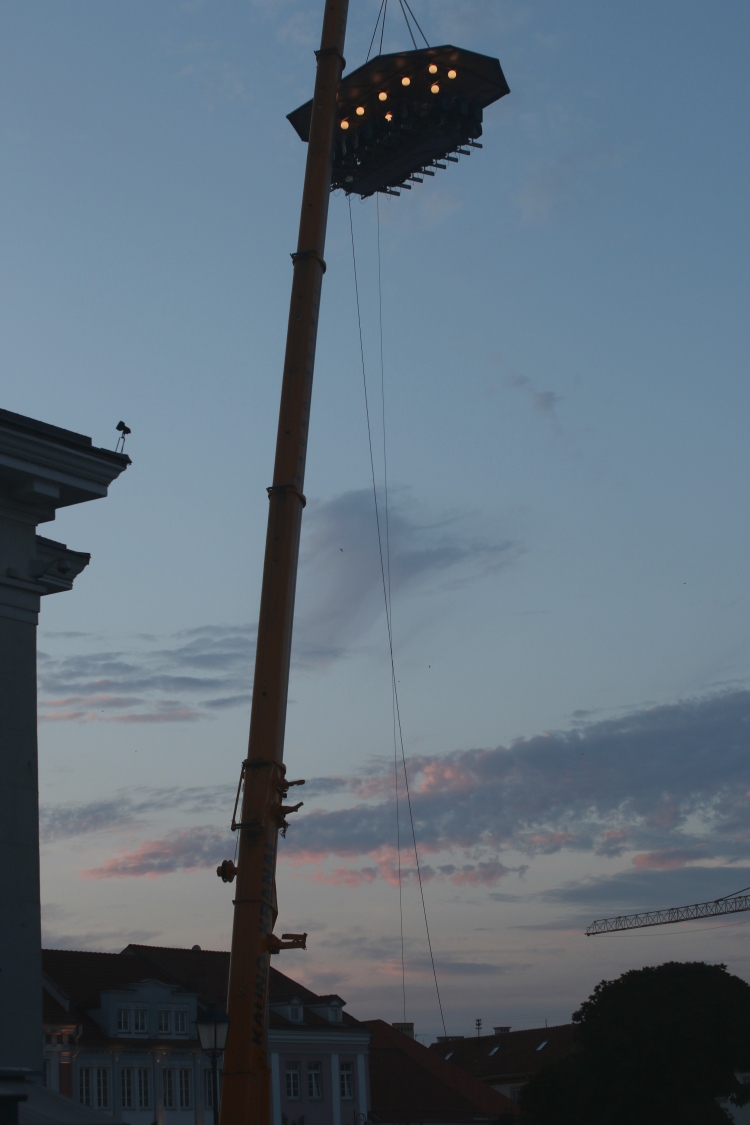 The top gimmick for this summer in Vilnius is without a doubt the “Dinner in the Sky” on Rotušės aikštė – town hall square. The event ran for only five days, between 3-7 August and a sunset dinner would have set you back 99 euros per head, while the pleasure of sipping a cocktail suspended 50 metres above anything solid would set you back only 29 euros. The concept is in its fourth year running in the Lithuanian capital, so clearly people are up for a memorable meal served up by star chefs Giulio Terrinoni, Deivydas Praspaliauskas or Josué Vergara. The one question I still have is: after a couple glasses of bubbles on the ground, an agonisingly slow ascent and a full dinner up high, strapped into a seat with heavy duty straps, swaying gently back and forth in the breeze, what do you do if you start feeling the urge to go for a tinkle?
The top gimmick for this summer in Vilnius is without a doubt the “Dinner in the Sky” on Rotušės aikštė – town hall square. The event ran for only five days, between 3-7 August and a sunset dinner would have set you back 99 euros per head, while the pleasure of sipping a cocktail suspended 50 metres above anything solid would set you back only 29 euros. The concept is in its fourth year running in the Lithuanian capital, so clearly people are up for a memorable meal served up by star chefs Giulio Terrinoni, Deivydas Praspaliauskas or Josué Vergara. The one question I still have is: after a couple glasses of bubbles on the ground, an agonisingly slow ascent and a full dinner up high, strapped into a seat with heavy duty straps, swaying gently back and forth in the breeze, what do you do if you start feeling the urge to go for a tinkle?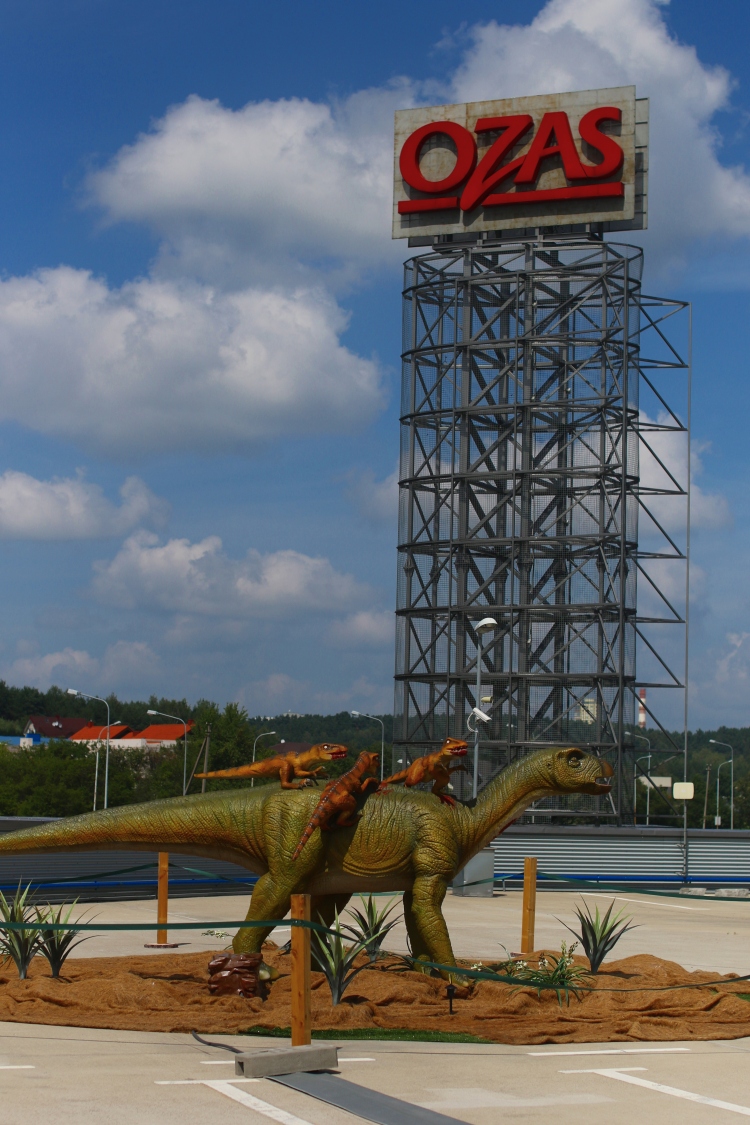 Since 22 July, Vilnius has been treated to one of the most bizarre attractions yet – Dino.lt Park Ozas. Baking in the scorching sun on the sprawling top floor of the massive parking lot of shopping centre Ozas in the suburbs north of Vilnius, Dino.lt is an animatronic dino-stravaganza. The rubber-encased robots are built to scale, and under each is a loudspeaker screeching plausible dinocoustics. If you get bored with the oversized jurassics, there’s also a huge playground made of plastic and a bouncy castle, and there is the obvious ice cream stand next to the entrance. Kids pay 7 euros and adults 8, which would seem to suggest that grownups somehow have a greater willingness to pay than kids for this particular attraction. Kids under 2 get in for free – if they manage to get past the screeching head of a triceratops that pops out of a hole next to the cashier, without being reduced to tears. If you’re not that into dinos, at least you get a nice view of the motorway, and a chance to work on the summer tan.
Since 22 July, Vilnius has been treated to one of the most bizarre attractions yet – Dino.lt Park Ozas. Baking in the scorching sun on the sprawling top floor of the massive parking lot of shopping centre Ozas in the suburbs north of Vilnius, Dino.lt is an animatronic dino-stravaganza. The rubber-encased robots are built to scale, and under each is a loudspeaker screeching plausible dinocoustics. If you get bored with the oversized jurassics, there’s also a huge playground made of plastic and a bouncy castle, and there is the obvious ice cream stand next to the entrance. Kids pay 7 euros and adults 8, which would seem to suggest that grownups somehow have a greater willingness to pay than kids for this particular attraction. Kids under 2 get in for free – if they manage to get past the screeching head of a triceratops that pops out of a hole next to the cashier, without being reduced to tears. If you’re not that into dinos, at least you get a nice view of the motorway, and a chance to work on the summer tan. Today was the presumed day when Lithuania’s first and only king, Mindaugas, was crowned in 1253 – around the same time as the Mongols were busy sacking the Thai kingdom, Baghdad and Cairo. Since it doesn’t take much patriotism to get the Lithuanians out on the street, today was celebrated with a predictably pompous party in the centre of Vilnius, with singing, dance and a collective singing of the national anthem (if you’re not into the heavy-going traditional version,
Today was the presumed day when Lithuania’s first and only king, Mindaugas, was crowned in 1253 – around the same time as the Mongols were busy sacking the Thai kingdom, Baghdad and Cairo. Since it doesn’t take much patriotism to get the Lithuanians out on the street, today was celebrated with a predictably pompous party in the centre of Vilnius, with singing, dance and a collective singing of the national anthem (if you’re not into the heavy-going traditional version,  In Vilnius, you rarely get a glimpse of ‘traditional’ Lithuanian culture, the city’s culture being decisively contemporary and urban. But you don’t have to go far to enjoy the more authentic songs, dress and food of Lithuania. Over the weekend, the village of Švenčionys, about 80km northeast of Vilnius near the Belarus border, celebrated its 530-year anniversary with a village fete. The town existed before 1486 (that’s six years before Christopher Columbus set off on his fateful sailing trip, for comparison), but that was when it was first mentioned by its name in Lithuanian records. The folk dances and dresses are pretty much what you can expect from this part of the world – all fancy headdress, pretty apron and embroidered waistcoats, flapping about to the tune of violins and accordeons. What is perhaps less usual in the West is that people turned out in droves to watch the show, suggesting that folklore still pulls the crowds in this country.
In Vilnius, you rarely get a glimpse of ‘traditional’ Lithuanian culture, the city’s culture being decisively contemporary and urban. But you don’t have to go far to enjoy the more authentic songs, dress and food of Lithuania. Over the weekend, the village of Švenčionys, about 80km northeast of Vilnius near the Belarus border, celebrated its 530-year anniversary with a village fete. The town existed before 1486 (that’s six years before Christopher Columbus set off on his fateful sailing trip, for comparison), but that was when it was first mentioned by its name in Lithuanian records. The folk dances and dresses are pretty much what you can expect from this part of the world – all fancy headdress, pretty apron and embroidered waistcoats, flapping about to the tune of violins and accordeons. What is perhaps less usual in the West is that people turned out in droves to watch the show, suggesting that folklore still pulls the crowds in this country.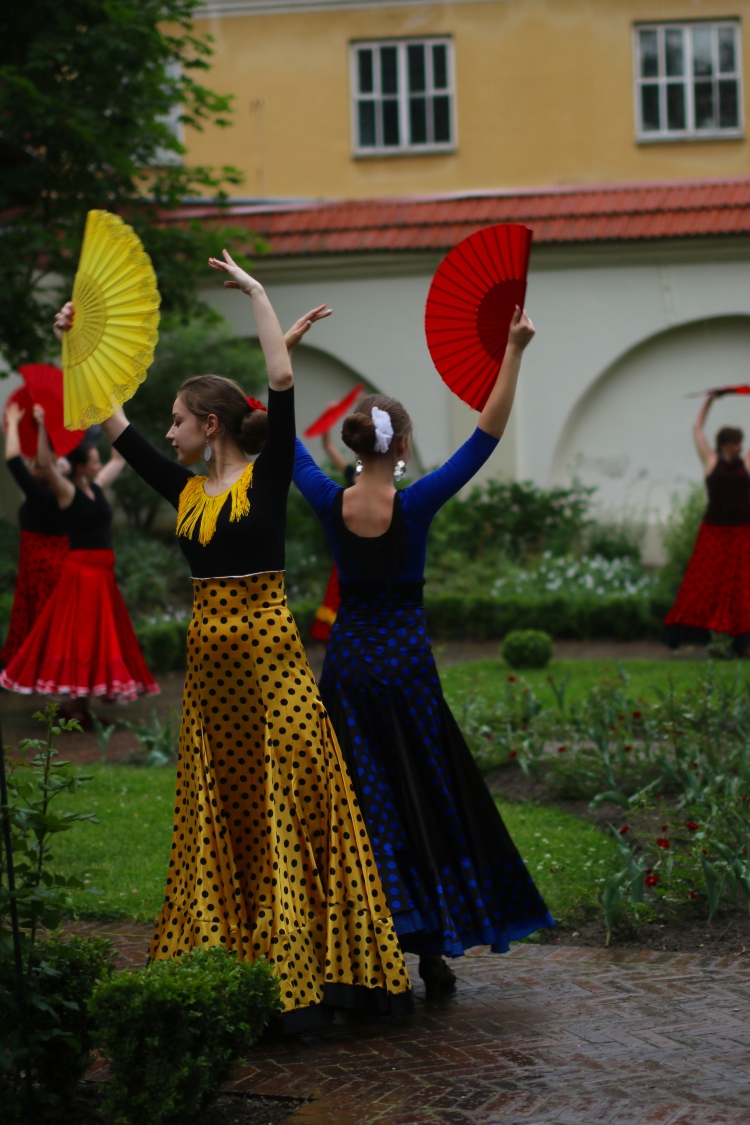 If you thought Baltic Pride was the only gig in Vilnius this weekend, you would be guilty of underestimating the ability of Vilnius to throw a string of great parties in a row. Tonight is Kulturos Naktis, “night of culture”, which is the cultural equivalent of a flashmob – all of a sudden from dusk onwards, the streets of Vilnius filled up with dancing, music, film and art. It would have been impossible for any one person to enjoy each and every one of the performances and installations – there were simply too many. But suffice to say that a wander along the streets of Vilnius tonight would have sated even the most jaded cultural buff. And it’s still going on – get downtown now and you will still be able to enjoy performances until sunrise. The upshot: anyone saying that Vilnius doesn’t have anything going on is utterly wrong.
If you thought Baltic Pride was the only gig in Vilnius this weekend, you would be guilty of underestimating the ability of Vilnius to throw a string of great parties in a row. Tonight is Kulturos Naktis, “night of culture”, which is the cultural equivalent of a flashmob – all of a sudden from dusk onwards, the streets of Vilnius filled up with dancing, music, film and art. It would have been impossible for any one person to enjoy each and every one of the performances and installations – there were simply too many. But suffice to say that a wander along the streets of Vilnius tonight would have sated even the most jaded cultural buff. And it’s still going on – get downtown now and you will still be able to enjoy performances until sunrise. The upshot: anyone saying that Vilnius doesn’t have anything going on is utterly wrong.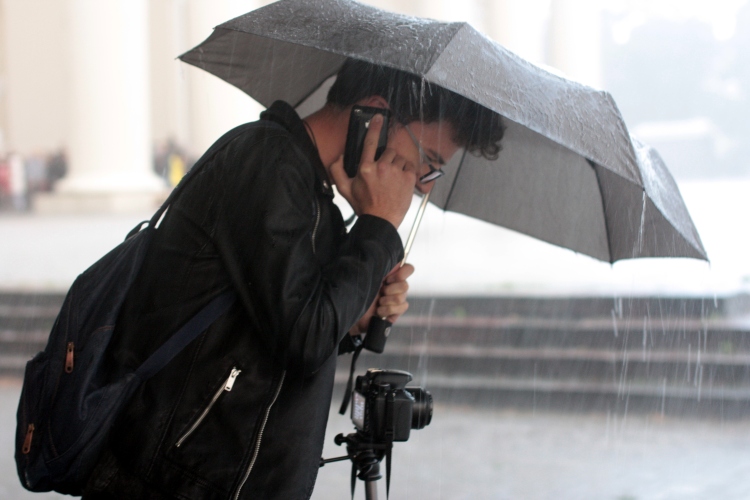 This weekend, Vilnius is set for a historic first, hosting the Baltic Pride – a regional pride festival that rotates between the three Baltic countries – on the city’s main avenue Gedimino Prospektas. Needless to say, after the weekend’s horrific homophobic murder spree in Orlando, the importance of normalising and mainstreaming LGBTI acceptance couldn’t be more obvious. If Vilnius, and Lithuania, can take pride in being forward-looking and tolerant in some respects, this has so far not been the case for LGBTI rights. The country has an infamous anti-gay law that restricts the dissemination of information that is ‘harmful to minors’ in that it contemplates forms of family arrangements other than heterosexual marriage. There is perhaps not the thuggish persecution of the Queer community like in other former Soviet countries. And the general response among locals is that it is fine for people to love whoever they want, as long as it’s not with regards to their own sons and daughters. Yet the country has a long way to go to embrace the plurality of the human capacity for love and tolerance, and having a Pride festival – on the main downtown drag (pun intended), as opposed to the outskirts of town as in previous attempts – is a huge win. And the concerts by Dana International and this year’s Lithuanian Eurovision contribution, Donny Montell, will surely go a long way to bridge Lithuania’s incongruous difficulty, on one hand, in embracing LGBTI rights, whilst at the same time going completely nuts for the Eurovision festival. So let’s hope for some sunshine, and a great party, on Saturday.
This weekend, Vilnius is set for a historic first, hosting the Baltic Pride – a regional pride festival that rotates between the three Baltic countries – on the city’s main avenue Gedimino Prospektas. Needless to say, after the weekend’s horrific homophobic murder spree in Orlando, the importance of normalising and mainstreaming LGBTI acceptance couldn’t be more obvious. If Vilnius, and Lithuania, can take pride in being forward-looking and tolerant in some respects, this has so far not been the case for LGBTI rights. The country has an infamous anti-gay law that restricts the dissemination of information that is ‘harmful to minors’ in that it contemplates forms of family arrangements other than heterosexual marriage. There is perhaps not the thuggish persecution of the Queer community like in other former Soviet countries. And the general response among locals is that it is fine for people to love whoever they want, as long as it’s not with regards to their own sons and daughters. Yet the country has a long way to go to embrace the plurality of the human capacity for love and tolerance, and having a Pride festival – on the main downtown drag (pun intended), as opposed to the outskirts of town as in previous attempts – is a huge win. And the concerts by Dana International and this year’s Lithuanian Eurovision contribution, Donny Montell, will surely go a long way to bridge Lithuania’s incongruous difficulty, on one hand, in embracing LGBTI rights, whilst at the same time going completely nuts for the Eurovision festival. So let’s hope for some sunshine, and a great party, on Saturday.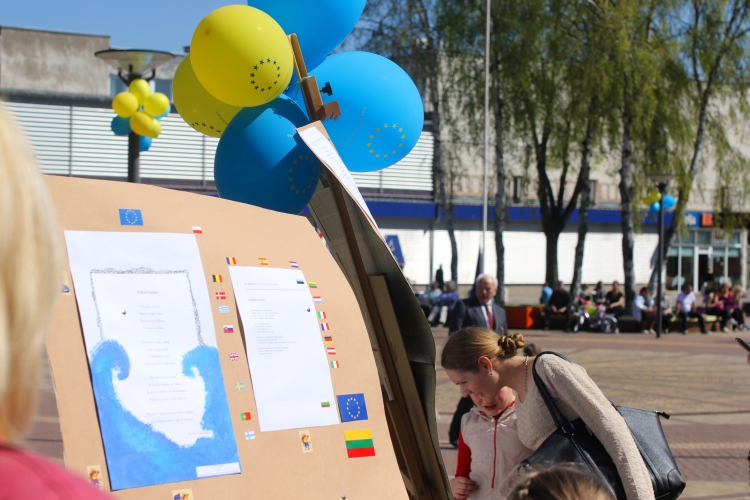 Lithuania’s foreign direct investment – in other words, the money from other injected from other countries into a country’s economy – adds up to 13.1 billion euros. Of that, 83.5 percent is from EU countries, showing just how important being part of the EU club has been to Lithuania’s economy, in addition to the
Lithuania’s foreign direct investment – in other words, the money from other injected from other countries into a country’s economy – adds up to 13.1 billion euros. Of that, 83.5 percent is from EU countries, showing just how important being part of the EU club has been to Lithuania’s economy, in addition to the 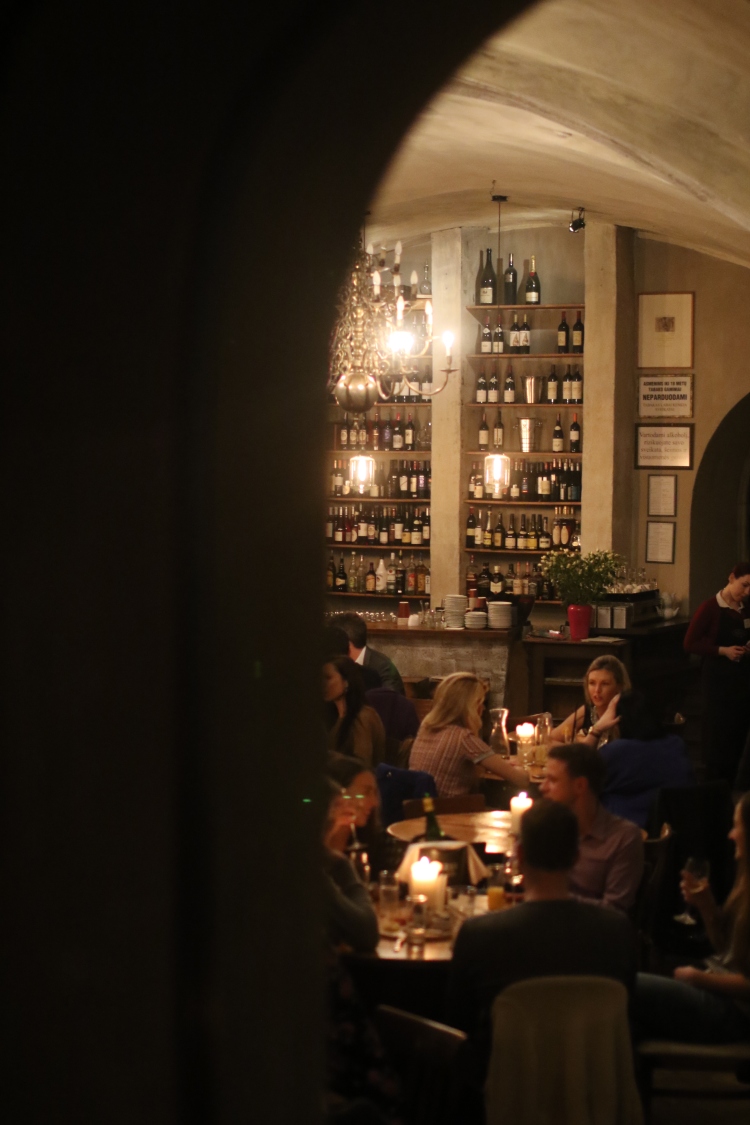 Vilnius has managed to largely escape the curse of the stag-and-hen-do hotspot that has afflicted other cities in the eastern half of Europe since accession to the EU and advent of no frills airlines. Rather than turning the old town into a gaggle of Australian nighclubs and rack-of-shots basement dives, the steady stream of relatively well-behaving visitors feeds a pleasant after-hours milieu of pubs and wine bars, where people talk and make merry, but don’t then proceed to wear traffic cones as impromptu fashion statements. It means that Vilnius is hardly a nightlife ‘destination’, but having seen how this particular tourist affects even venerable cities like Prague, Budapest or Riga, Vilnius is probably best off sticking to its current, classy, profile.
Vilnius has managed to largely escape the curse of the stag-and-hen-do hotspot that has afflicted other cities in the eastern half of Europe since accession to the EU and advent of no frills airlines. Rather than turning the old town into a gaggle of Australian nighclubs and rack-of-shots basement dives, the steady stream of relatively well-behaving visitors feeds a pleasant after-hours milieu of pubs and wine bars, where people talk and make merry, but don’t then proceed to wear traffic cones as impromptu fashion statements. It means that Vilnius is hardly a nightlife ‘destination’, but having seen how this particular tourist affects even venerable cities like Prague, Budapest or Riga, Vilnius is probably best off sticking to its current, classy, profile.